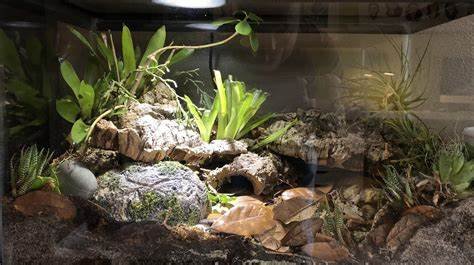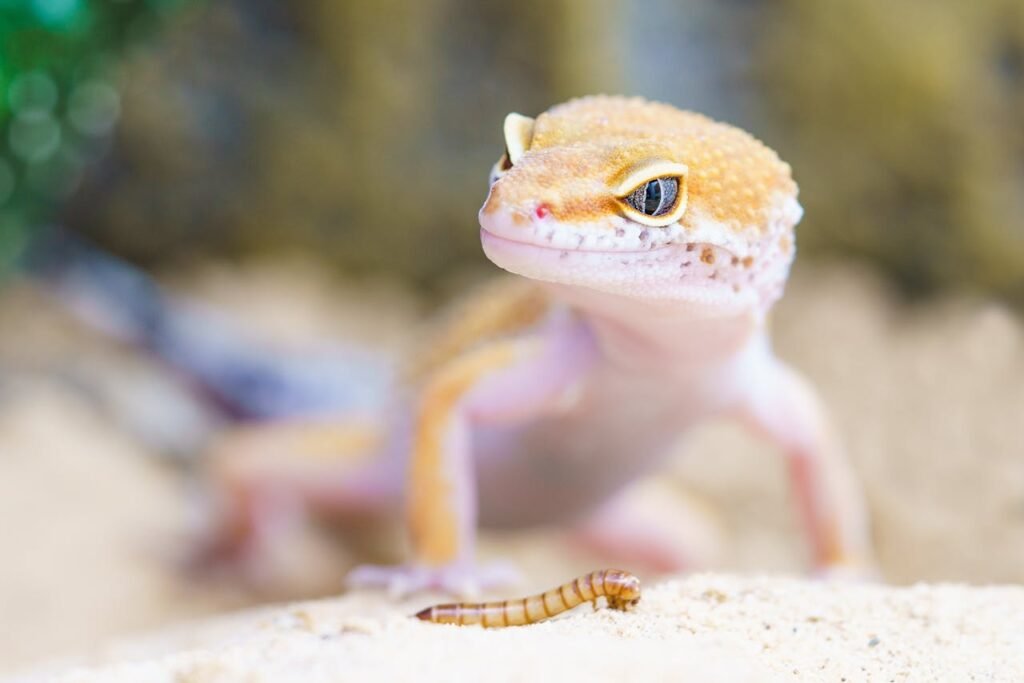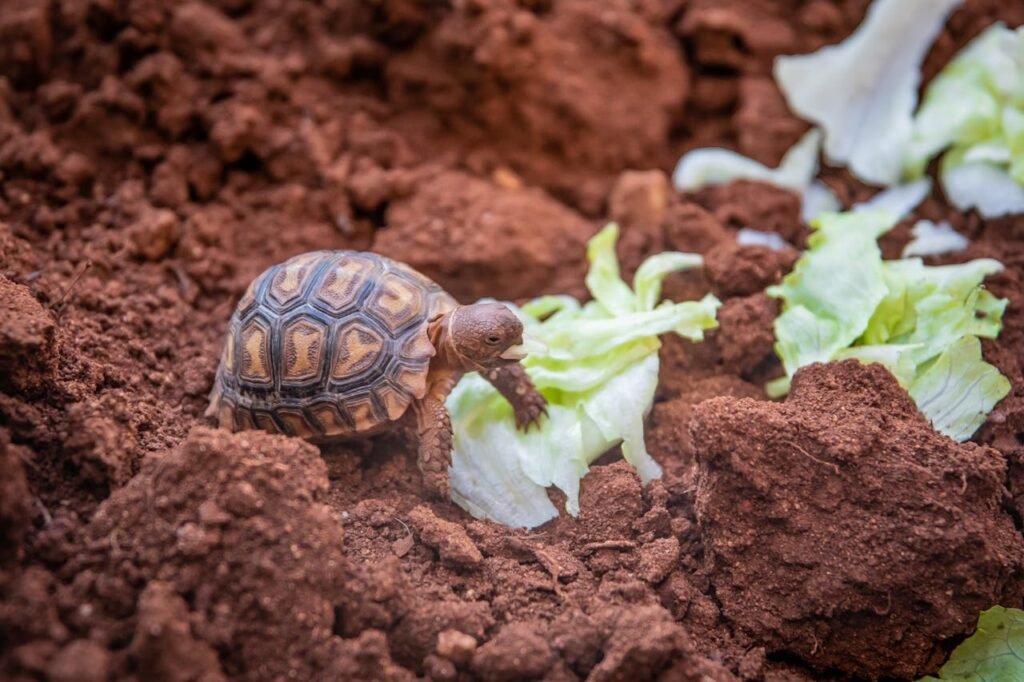Sustainable pet ownership is becoming a prominent trend in Australia, and reptile lovers are increasingly seeking ways to care for their pets while reducing their environmental footprint. Reptile care involves specific resources such as enclosures, heating, and feeding, but with thoughtful choices, it’s entirely possible to be eco-friendly. This guide explores ways to house, feed, and care for reptiles sustainably, with a focus on the unique conditions in Australia.
1. Eco-Friendly Enclosures and Habitat Design

Use Natural and Sustainable Materials
Reptiles spend the majority of their lives in their enclosures, so choosing sustainable materials is crucial:
- Locally sourced materials: Use driftwood, branches, and large stones found locally (properly cleaned) instead of synthetic decorations. This not only reduces plastic waste but also mimics a reptile’s natural habitat, helping them thrive. When collecting materials from nature, ensure you are allowed to do so in public spaces and clean them properly to remove any pests or contaminants.
- Sustainably grown bamboo: Bamboo is an excellent material for building climbing structures for reptiles like bearded dragons. It grows quickly, is highly renewable, and is biodegradable. Bamboo products such as Zoo Med’s Natural Cork Bark offer sustainable climbing surfaces for reptiles.
- Repurposed furniture: Instead of purchasing new habitat accessories, repurpose old shelves or furniture to create basking platforms and climbing structures. An old wooden shelf can easily be converted into a basking ledge for your reptile. This reduces waste and gives new life to used items.
Energy-Efficient Heating and Lighting
Heating and lighting are essential for reptiles, but they can consume a lot of energy. Here’s how to make this more sustainable:
- LED UVB and heat lamps: Reptiles require both UVB lighting for vitamin D3 synthesis and heat for thermoregulation. Opt for energy-efficient options like the Arcadia D3 UVB bulbs, which provide UVB light while consuming less energy and lasting longer than traditional bulbs. Another excellent product is the Exo Terra Solar Glo, a compact, energy-saving bulb that provides both light and heat in one solution.
- Timers and smart outlets: Automate heating and lighting schedules using timers to ensure no energy is wasted. For example, set a Kasa Smart Wi-Fi Plug to power down heat lamps during nighttime when the reptile doesn’t need additional heating. Timers help mimic natural daylight cycles, which are essential for reptiles’ well-being.
- Solar-powered heating: In Australia’s sunny climate, solar panels can be used to power reptile heating systems. If you have outdoor enclosures, solar-powered heat lamps and basking spots are a great way to use renewable energy while keeping your reptiles warm. Products like the SunPulse Solar Heater can be installed to capture energy for heat lamps during daylight hours.
Advanced Heating Systems and Smart Thermostats
For more advanced heating setups, use smart thermostats to regulate temperatures in your reptile’s enclosure. These devices allow you to set precise temperatures and adjust them automatically based on external conditions, reducing energy waste. The Habistat Dimming Thermostat is a great choice for reptile owners who want to maintain optimal conditions with minimal environmental impact.
Recycled and Biodegradable Substrates
Substrate selection is an important aspect of sustainable reptile care:
- Coconut coir: This substrate is made from the husks of coconuts, making it a biodegradable, renewable option. Products like Exo Terra Plantation Soil are not only eco-friendly but also help maintain humidity levels in tropical reptile enclosures.
- Newspaper or recycled paper substrates: Using recycled paper as a substrate is a low-cost, eco-friendly option for reptiles that don’t require high humidity, such as ball pythons or leopard geckos. Products like Zoo Med’s Eco Earth are composed of biodegradable materials and are compostable.
- Organic soil and compost: For reptiles that enjoy digging or burrowing, such as certain skinks or snakes, use organic soil. Make sure the soil is pesticide-free and chemical-free, and consider composting it after use.
2. Sustainable Feeding Practices
Locally Sourced and Organic Foods
Food production can leave a large carbon footprint, so sourcing locally and choosing organic options helps minimize the impact:
- Insects: Breeding your own mealworms, crickets, or dubia roaches at home is a cost-effective and eco-friendly way to feed your insectivorous reptiles. It reduces transportation emissions and packaging waste. For example, a DIY mealworm farm requires just a small container and proper care, making it a manageable solution for most reptile owners.
- Local organic produce: When feeding herbivorous or omnivorous reptiles, buying organic vegetables from local farmers helps support sustainable agriculture while reducing pesticide use. Reptile-friendly greens like dandelions, collard greens, and mustard greens are easy to source locally and can also be grown at home.
DIY Insect Farming
Starting your own insect farm can significantly cut down the environmental impact of sourcing food for your reptiles. Mealworms and crickets are easy to breed and can be kept in small containers at home. A simple plastic bin with ventilation holes and regular feeding with organic scraps can maintain a sustainable feeder insect colony.
Grow Your Own Vegetables
Growing food for your reptiles not only ensures a pesticide-free diet but also reduces the need for store-bought vegetables. Herbs like basil, mint, and parsley, along with leafy greens, can be easily grown in small spaces or containers, even indoors.
Bulk Buying and Sustainable Packaging
- Buy in bulk: Bulk purchasing reduces packaging waste significantly. For instance, buying frozen rodents in bulk for carnivorous reptiles ensures you’re not constantly receiving shipments in plastic packaging.
- Compostable packaging: Look for suppliers that package feeder insects in compostable materials. Companies like The Bug Shed offer insects in biodegradable bags, further reducing your waste footprint.
3. Eco-Friendly Cleaning and Maintenance

Non-Toxic Cleaning Products
Cleaning your reptile’s enclosure regularly is important for its health, but many cleaning products contain harsh chemicals that can harm both your pet and the environment. Consider using:
- Vinegar and water: An effective, natural disinfectant for most reptile enclosures. Mix equal parts white vinegar and water for a safe cleaning solution.
- Baking soda: For removing odors and tough stains, baking soda is a gentle yet effective cleaner.
Composting Waste
Many types of reptile waste and used substrate can be composted:
- Compostable substrates: Substrates like coconut coir and natural soil can be composted once they’re no longer needed, reducing landfill waste.
- Plant waste: If your reptiles consume fruits and vegetables, compost any leftover scraps instead of throwing them away.
4. Sustainable Water Usage and Hydration
Reuse Water for Plants
If your reptile’s water dish needs to be refreshed daily, instead of discarding the old water, reuse it for watering plants. This is especially helpful for larger reptiles like tortoises, which require large water bowls.
Rainwater Collection
For reptiles that require frequent misting (such as chameleons or tropical geckos), rainwater is a more eco-friendly solution than using tap water. Install a rainwater collection system with barrels or small tanks, then filter the water to ensure it’s safe for your reptiles.
5. Reducing Your Carbon Footprint

Adopt Instead of Buy
Adopting reptiles from rescue centers helps reduce the demand for commercially bred reptiles, many of which are overbred or improperly cared for. In Australia, there are various reptile rescue groups that specialize in rehoming reptiles in need of care. This helps cut down on the environmental impact of reptile breeding facilities.
Ethical Sourcing of Reptiles
If you do decide to purchase a reptile, ensure that it comes from a reputable breeder who practices ethical, sustainable breeding. Avoid purchasing reptiles that are captured from the wild, as this contributes to the depletion of natural populations. In Australia, breeders should follow strict guidelines to ensure that captive-bred reptiles do not contribute to wildlife trafficking.
6. Australian Regulations and Specifics
Follow Local Wildlife Laws
In Australia, owning reptiles like blue-tongue skinks, pythons, or bearded dragons may require a license. It’s essential to follow wildlife regulations and acquire the necessary permits from local authorities, such as your state or territory’s environmental department. This not only helps protect native wildlife but also ensures that reptile trade is conducted ethically.
Conclusion
Sustainable reptile ownership in Australia is achievable with the right knowledge and careful planning. By opting for eco-friendly materials, reducing energy consumption, composting waste, and sourcing food locally, reptile lovers can minimize their environmental footprint. With these small steps, you contribute to a greener planet while providing the best possible care for your pets.
